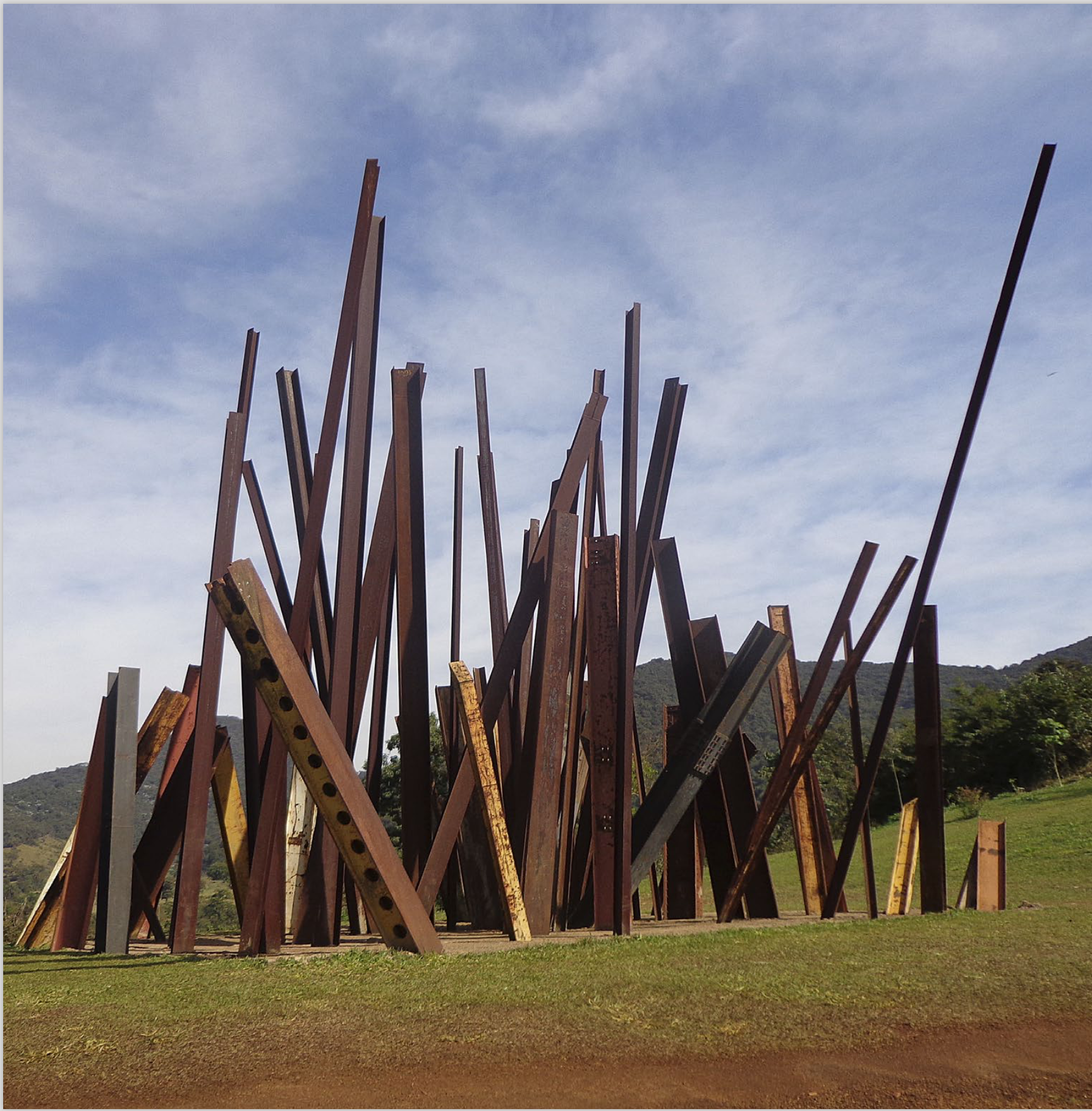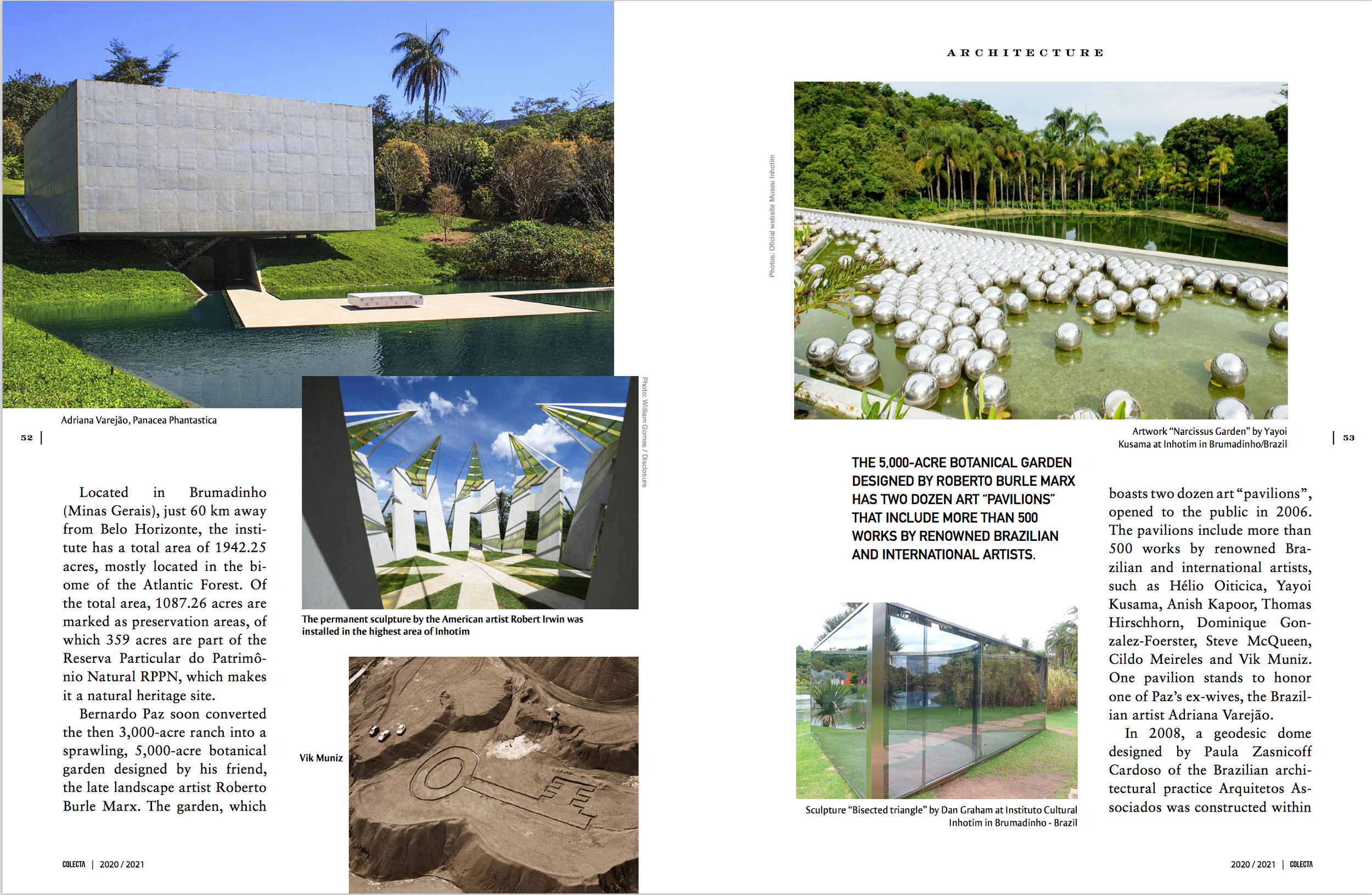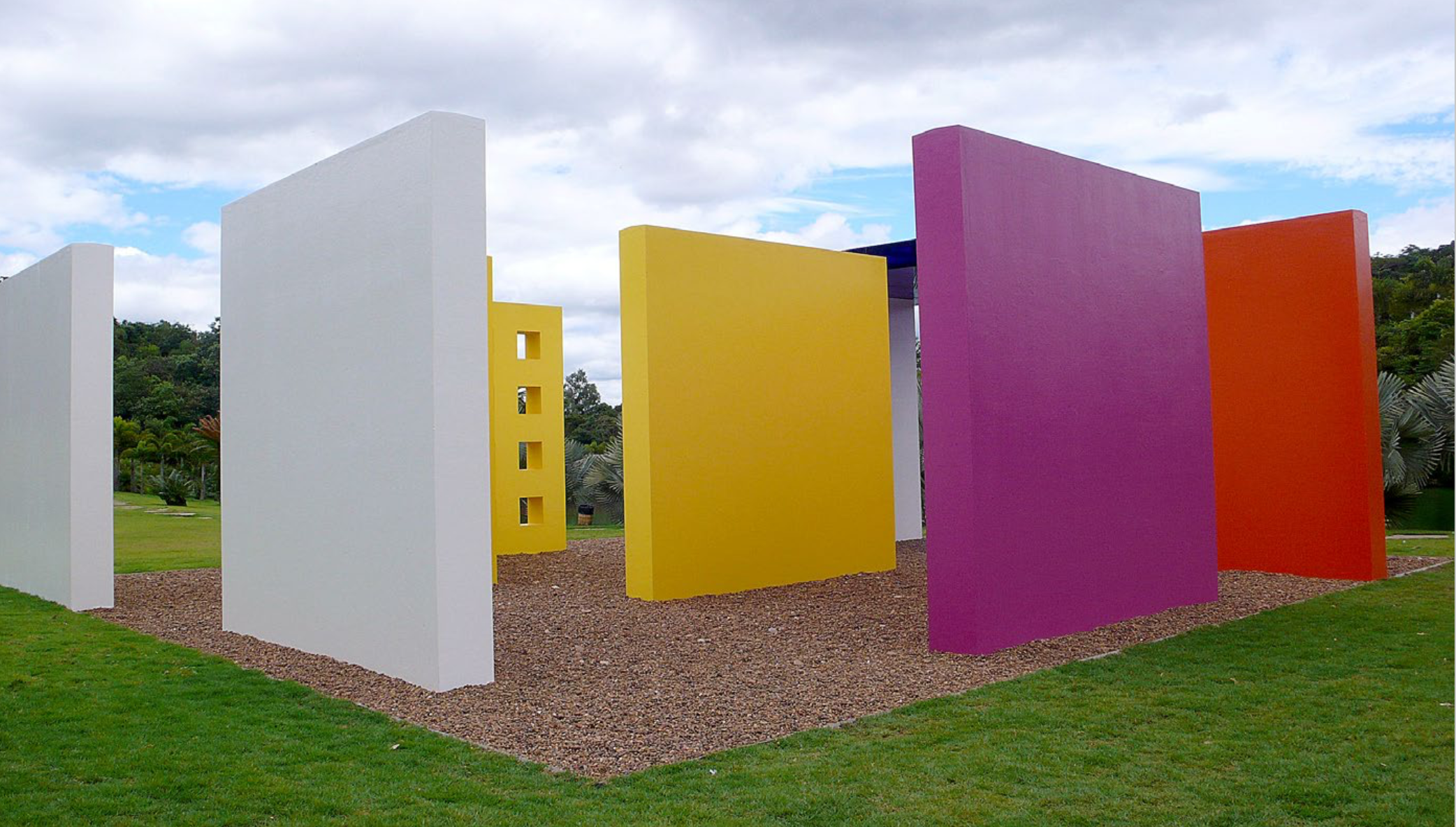The Intersections of Art & Engineering
Beam Drop Instalation by Chris Burden at Inhotim, Minas Gerais - Brazil
Colecta Magazine - Edition 1 Dec 2020
A good architectural design requires a healthy balance of practical and science-minded thinking. A harmonious architectural design requires that one considers both of these factors seen through a keen artistic eye.
The INHoTIM (Inhotim Institute) is home to one of the largest foundations of contemporary art in Brazil, and one of the largest outdoor art centers in Latin America. It was founded by the former mining magnate Bernardo Paz in 2004 to house his personal art collection, but it was opened to the public a couple of years later. In 2014, the open-air museum was one of TripAdvisor’s top 25 best-ranked museums in the world.
Located in Brumadinho (Minas Gerais), just 60 km away from Belo Horizonte, the institute has a total area of 1942.25 acres, mostly located in the biome of the Atlantic Forest. Of the total area, 1087.26 acres are marked as preservation areas, of which 359 acres are part of the Reserva Particular do Patrimônio Natural RPPN, which makes it a natural heritage site. Bernardo Paz soon converted the then 3,000-acre ranch into a sprawling, 5,000-acre botanical garden designed by his friend, the late landscape artist Roberto Burle Marx.
The garden, which boasts two dozen art “pavilions”, opened to the public in 2006. The pavilions include more than 500 works by renowned Brazilian and international artists, such as Hélio Oiticica, Yayoi Kusama, Anish Kapoor, Thomas Hirschhorn, Dominique Gonzalez-Foerster, Steve McQueen, Cildo Meireles and Vik Muniz. One pavilion stands to honor one of Paz’s ex-wives, the Brazilian artist Adriana Varejão. In 2008, a geodesic dome designed by Paula Zasnicoff Cardoso of the Brazilian architectural practice Arquitetos Associados was constructed within an eucalyptus forest and now contains Matthew Barney’s installation De Lama Lâmina [From Mud, a Blade] (2004–08), which shows a vehicle uprooting a tree.
Chris Burden’s Beam Drop (1984–2008) is made of 72 steel beams dropped 45 meters from 150-foot-high cranes into a pilled with wet cement. Sonic Pavilion by Doug Aitken was realized in 2009 and consists of a circular building of frosted glass on top of a hill that contains a well. This goes down 200 meters into the ground and at its bottom microphones capture the sounds of the earth, which are then amplified and played live in the gallery above.
Vegetation Room (2012) by Cristina Iglesias is a cube of polished stainless steel reflecting the surrounding forest. Visitors slip into crevices where the walls are sculpted foliage, entering a labyrinth within the labyrinth; at the cube’s heart, torrents of water periodically rush.
Images from Colecta Magazine showing the spaces inside the Inhotim Museum in Brazil.
In 2009, around 133,000 people travelled to Inhotim In 2011, the park attracted nearly 250,000 visitors from all over the world. In August 2018, they reached 3 million visitors.
Images from Colecta Magazine - Hélio Oiticica at Instituto Cultural Inhotim in Brumadinho/Brazil.
Available in both print and digital formats, Colecta Magazine ensures accessibility for a broad audience. Each issue is thoughtfully curated to inspire, inform, and provoke thoughtful dialogue, fostering a strong sense of community in Miami’s eclectic cultural landscape.
For more information about the inaugural edition of Colecta Magazine, please visit our platforms.
Click on the link and buy the printed version.
Stay connected with the latest news and features by following Colecta Magazine on social media @colectamag
Enjoy your reading!
Giuliana Brandao
Editor-in-chief



